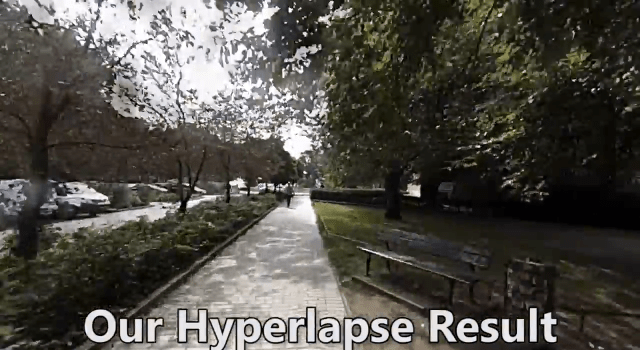First-person video, which rose to popularity with GoPro‘s tiny cameras, has opened up entirely new avenues for sharing our experiences. The only problem? Those videos are often incredibly shaky.
Microsoft Research unveiled a potential fix over the weekend: Hyperlapse, a timelapsed tweak for shaky first-person video that goes far beyond mere video stabilization.
Hyperlapse is just a research project at the moment, but it could become commercially available soon.
As Microsoft’s researchers explain, today’s video stabilization methods don’t work when you just speed up a video for a traditional time-lapse, as video shakiness is actually exacerbated when you speed it up. Hyperlapse solves this problem by creating a 3D representation of the video’s path, finding an optimal spot in that 3D version of the video for smooth video, connecting those points together, and then generating a smoothed out time-lapsed video with those frames.
The results are simply beautiful:
The project is the brainchild of Microsoft researchers Johannes Kopf, Michael Cohen, and Richard Szeliski. They say they’re working on making the Hyperlapse algorithm available as a Windows app, but it’ll likely be some time until that happens.
Below, check out a more technical breakdown of how Hyperlapse works:
VentureBeat's mission is to be a digital town square for technical decision-makers to gain knowledge about transformative enterprise technology and transact. Learn More

